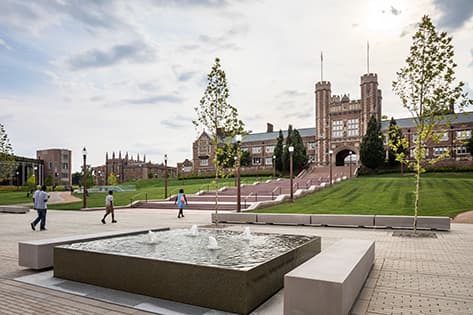Shubham Sunil Sharma
Energy, Environmental & Chemical Engineering
Degree pursuing: PhD in Energy, Environmental & Chemical Engineering

Where did you complete your undergraduate degree?
Institute of Chemical Technology
Are you performing any research in a lab?
I am currently conducting research in Professor Benjamin Kumfer's lab within the Department of Energy, Environmental and Chemical Engineering. My work focuses on investigating the health effects of carbonaceous particulate matter. Specifically, I am developing and utilizing innovative combustion systems to generate carbonaceous aerosols, which are then directly deposited onto in vitro cell cultures. This approach allows me to study how variations in the physical and chemical properties of these aerosols influence biological responses, advancing our understanding of their potential health impacts
What made you want to pursue a graduate engineering degree?
I have always been drawn to solving complex problems, particularly those related to air quality and environmental health. This interest led me to realize that there is still much we do not fully understand about how aerosols impact human health. The links between exposure to airborne particles and the development of serious diseases, including cancer, remain an area of active research. This gap in knowledge motivated me to pursue a graduate degree, where I could gain the technical expertise, research experience, and interdisciplinary perspective needed to contribute meaningfully to this field. Graduate study provides the ideal platform for me to explore these questions in depth and develop solutions that can inform both science and public health policy.
Why did you choose WashU?
WashU stands out to me for its strong commitment to interdisciplinary research and its leadership in both environmental engineering and medical sciences. The unique integration between the School of Engineering and the School of Medicine creates an exceptional environment for studying the intersection of environmental exposures and human health. This collaborative atmosphere is particularly valuable for my research interests, which lie at the convergence of aerosol science, toxicology, and public health. The opportunity to work with experts across disciplines and access state-of-the-art research facilities makes WashU an ideal place to pursue impactful, translational research that bridges environmental engineering and medicine.
What is your favorite thing about St. Louis?
One of my favorite things about St. Louis is spending time in Forest Park, especially on days with nice weather. It's a beautiful, expansive green space that offers a peaceful break from the lab and a chance to recharge. Whether I'm walking the trails, visiting one of the museums, or just enjoying the scenery, Forest Park is a perfect reminder of the balance between nature and city life that makes St. Louis such a great place to live and study.
What advice would you give to a new student?
Research can feel intimidating at first, especially when you're surrounded by cutting-edge work and highly accomplished peers, but it's important to remember that you are capable and you belong here. Everyone starts somewhere, and growth comes with time, persistence, and curiosity. Don't be afraid to ask questions, make mistakes, or seek guidance.
What campus activities or groups would you recommend to a new student?
For students who enjoy the outdoors, I highly recommend joining the Graduate Nature Trippers. It's a fantastic group for nature enthusiasts, offering monthly events like hikes, park visits, and other outdoor activities.
What are your plans for the future?
In the future, I intend to join the pharmaceutical industry, where I can apply my background in aerosol science to the development of advanced drug delivery systems for respiratory diseases. I'm particularly interested in leveraging my research experience to improve the design and effectiveness of inhalable therapeutics for conditions such as asthma, COPD, and other pulmonary pathologies. My goal is to contribute to innovations that translate directly into better patient outcomes
